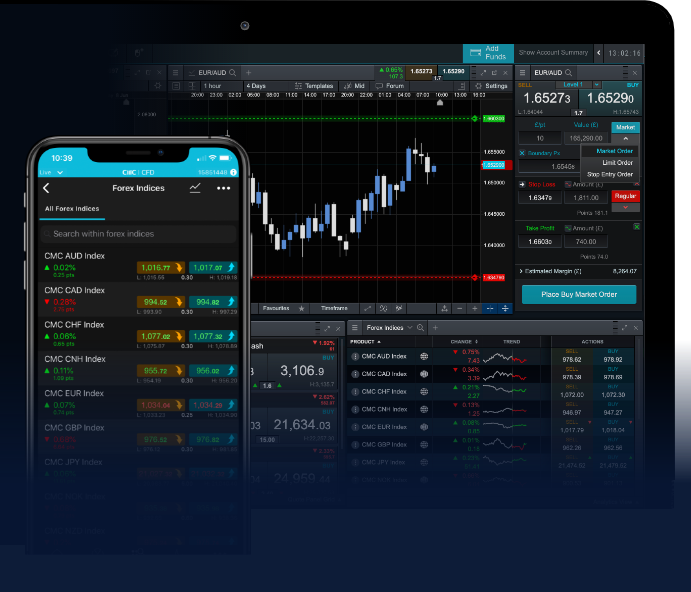
Forex trading is a lucrative opportunity for many individuals looking to invest and diversify their portfolios. If you’re considering entering the world of Forex, one of the first steps is to how to open a forex trading account Top LATAM Forex Platforms find a reputable broker and open a trading account. This article will guide you through the process step by step, ensuring you understand all the essential aspects of starting your Forex trading journey.
Understanding Forex Trading
Forex, or foreign exchange, involves the trading of currencies in pairs, with the aim of profiting from changes in exchange rates. The Forex market is the largest financial market in the world, and it operates 24 hours a day, five days a week. As a beginner, it’s crucial to understand the basics of Forex trading and delve into market analysis, trading strategies, and risk management.
Step 1: Research and Choose a Forex Broker
Your first step in opening a Forex trading account is to select a reputable Forex broker. Here are some factors to consider when choosing a broker:
- Regulation: Ensure that the broker is regulated by a recognized financial authority. Regulatory bodies provide a level of security and oversight for traders.
- Trading Platform: Look for user-friendly platforms offering necessary tools and features, such as technical analysis, charting tools, and user support.
- Account Types: Different brokers offer various account types with differing spreads, leverage, and account minimums. Choose one that suits your trading style and budget.
- Customer Support: Efficient customer support can make a significant difference, especially when solving problems or seeking assistance.
Step 2: Gather Required Documents
After selecting a broker, the next step is to prepare the necessary documentation for account registration. Most brokers will require:

- Identification: A government-issued photo ID, such as a passport or driver’s license, to verify your identity.
- Proof of Address: Recent utility bills or bank statements can serve as proof of residency.
- Tax Information: In some jurisdictions, brokers may require tax information or your social security number.
Step 3: Open Your Account
Once you have all your documents in order, visit the broker’s website to open an account. Look for the “Open Account” or “Register” button and follow these steps:
- Complete the Registration Form: Fill in your personal information, including name, address, and contact details.
- Upload Documents: Submit the required ID and proof of address using the broker’s online portal.
- Account Verification: After submission, you’ll receive confirmation that your documents are under review. This process can take anywhere from a few hours to several days.
Step 4: Fund Your Trading Account
Once your account is approved, you need to deposit funds to start trading. Different brokers offer various funding methods, including:
- Bank Wire Transfers: A secure method recommended for larger deposits, though it may take a few days to process.
- Credit/Debit Cards: Instant deposits typically available via cards, but some brokers may have limitations on withdrawals.
- Electronic Payment Systems: Platforms like PayPal, Skrill, or Neteller are also common options for funding your account.
Step 5: Choose Your Trading Strategy
As a beginner trader, it’s vital to familiarize yourself with different trading strategies and choose one that aligns with your risk tolerance and lifestyle. Here are a few popular strategies:
- Scalping: A short-term trading strategy aimed at making small profits on minor price movements.
- Day Trading: Traders buy and sell within a single day, avoiding overnight exposure.
- Swing Trading: This medium-term strategy holds trades for several days or weeks, depending on market trends.
- Position Trading: A long-term strategy where traders hold positions for extended periods, riding out market volatility.
Step 6: Practice with a Demo Account
Many brokers offer demo accounts that allow you to practice trading with virtual money before committing real funds. This is an excellent opportunity to:
- Familiarize yourself with the trading platform.
- Test your trading strategies without financial risk.
- Gain confidence in your ability to trade effectively.
Step 7: Start Trading
Once you feel comfortable and have developed a trading plan using your demo account experience, it’s time to start trading with real money. Begin with a small investment and gradually increase your exposure as you gain more experience and confidence. Remember to:
- Manage your risk by only risking a small percentage of your overall capital on each trade.
- Use stop-loss orders to protect your investments from significant losses.
- Continuously educate yourself about Forex market dynamics and evolving trends.
Conclusion
Opening a Forex trading account is the first step on your journey into the exciting world of currency trading. By following the steps outlined in this guide and choosing a well-regulated broker, you can ensure a smoother start to your trading experience. Always remember to practice risk management and continuously educate yourself. Happy trading!

Recent Comments